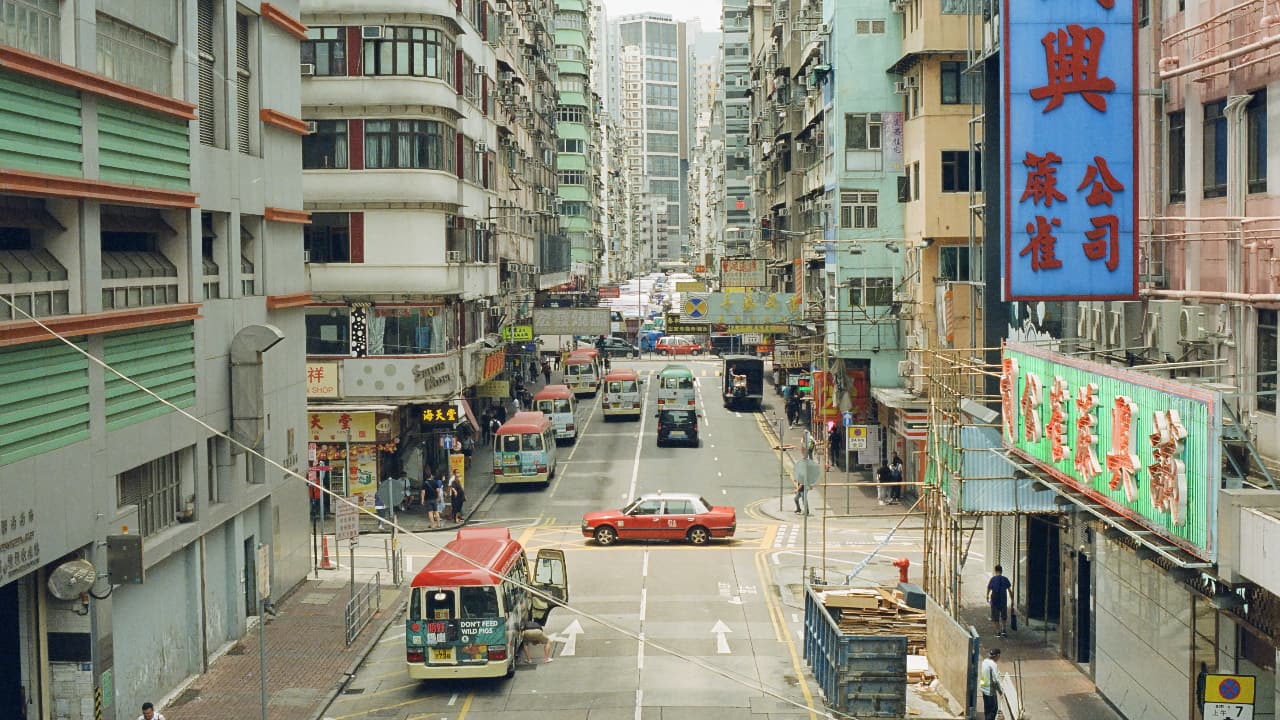
Replay: With the price of popular 35mm film stocks soaring thanks to a revival in the medium, photographers are looking for cheaper alternatives.
I’ll start by pleading guilty. As a 20-something British man travelling around the world with an unhealthy (and frankly unsustainable) addiction to buying cameras, I am part of the problem here. Over the past year, I’ve begun to dabble in 35mm film photography. With so many others like me doing the same in recent years, film photography is undergoing something of a renaissance — similar to the revival of vinyl, I suppose. Who’d have thought it?
Not so long ago, film was nearing the end. All the big players were packing up the analogue world and winding it down, like one last spool of film. Digital had arrived — easier, crisper, unlimited in its shots and ability to post-process. Film was dead. And yet…here we are. In 2023 the demand for film has increased to such a degree that the likes of Kodak can’t keep up. As every dreary A-level economics class will teach, increased demand and limited supply leads to rising prices. So, the question on many photographers' lips now is, how to shoot colour film without breaking the bank?
Why does 35mm colour film cost so much?
On March 1st 2023, Kodak implemented another price rise on all its film stock — an increasingly common (and frustrating) move. Depending on the type of film, the dealer cost increased from anywhere between 10% to 25%, locking in a guaranteed knock-on price hike for customers. There are a few reasons this is happening.
Firstly, the cost of producing film is expensive, and keeps on rising. The direct costs including the paper, the chemicals and the manual labour are all increasing. Meanwhile, environmental costs are also on the rise (those chemicals aren’t exactly eco-friendly).
On top of this, the cost of logistics have increased drastically, in part thanks to the pandemic. To ship the same product now costs a fair bit more than it did just a few years ago. It’s not exactly as if there are loads of production facilities, either. In an apparently poor judgement call (seriously, how were they to know), film manufacturers pretty much got rid of all the systems and equipment needed to produce film on a large scale. It was supposed to be a dying format on the way out. Whole factories were transformed and re-directed for other more useful, profitable purposes. With this kind of equipment no longer being produced, manufacturers have had to make do with and maintain what they still had running.
Add into the mix general inflation and the absurd increase in demand as whole new generations suddenly realise that film really is better than digital (sorry), and voilà. You have yourself the perfect storm. Let’s say I buy a “cheap” roll of Kodak Gold 200, now selling for £15.99 at best. By the time I go and get it developed and scanned at my local supplier, that's another £10.00 minimum…hardly economical, especially in the current cost of living crisis.
The cheap workaround
Naturally, hobbyist photographers can’t really afford to play this game. There’s a strong case to be argued for switching to much cheaper black and white film, but that’s another article for another day. What do you do if you really want to shoot colour film without breaking the bank? Some savvy photographers think they’ve found the answer…for now.
Enter Kodak Vision3. This is the last commercially mass-produced colour negative motion picture film out there. Originally, this film was created and sold for the purpose of shooting films and TV. Notably, it’s been used to shoot HBO’s hit series Succession, Christopher Nolan’s Dunkirk (2017) and Quentin Tarantino’s Once Upon a Time in Hollywood (2019). It’s trusted and revered by the best in the business, loved for its high dynamic range and nostalgic, “cinematic” colours (something that everyone’s still trying to emulate in their digital post-processing).
How to shoot Kodak Vision3 for 35mm photography
So, how does this work for photography? A few people have begun picking up ready-to-shoot 35mm canisters of Kodak Vision3 on sites like eBay, then hand spooling it into 36-exposure canisters, ready to load into a 35mm camera. If you want to skip that slightly tricky process (you’d have to buy the equipment to bulk load yourself), some dealers sell the hand-spooled, ready-to-shoot 35mm canisters online for a very reasonable price – usually around £7 or £8 at the time of writing
There are a couple of variants with Kodak Vision3. You’ve got the 250D which is a middle-of-the-road, daylight balanced stock, the 500T, which is tungsten balanced and great for shooting at night, or the 200T – a tungsten balanced 200iso stock. There’s also the daylight balanced 50D, which has a very fine grain and is considered best for bright, daylight exteriors.
With its appealing price tag, Kodak Vision3 500T is proving to be a much better deal compared to picking up even the cheapest colour 35mm rolls such as Kodak Gold 200 or Fujifilm C200. I stocked up on this and headed to Hong Kong to try it out.
Testing out Kodak Vision3 500T
Hong Kong was the first time I’d shot Kodak Vision3. Going head first through eight whole rolls was probably risky in hindsight, but I had a week in the city and really wanted to put it through its paces. Overall, I’m pretty delighted with the results.
Colours and tones
In terms of colour, the film did exactly what I wanted it to do. In the shadows, we see the darker, cooler blues while in the highlights and exposed areas, I’m getting the warmer, orange tones coming through. It’s the classic Hollywood colour grade and, alongside the grain, it certainly gives a cinematic quality to the images.
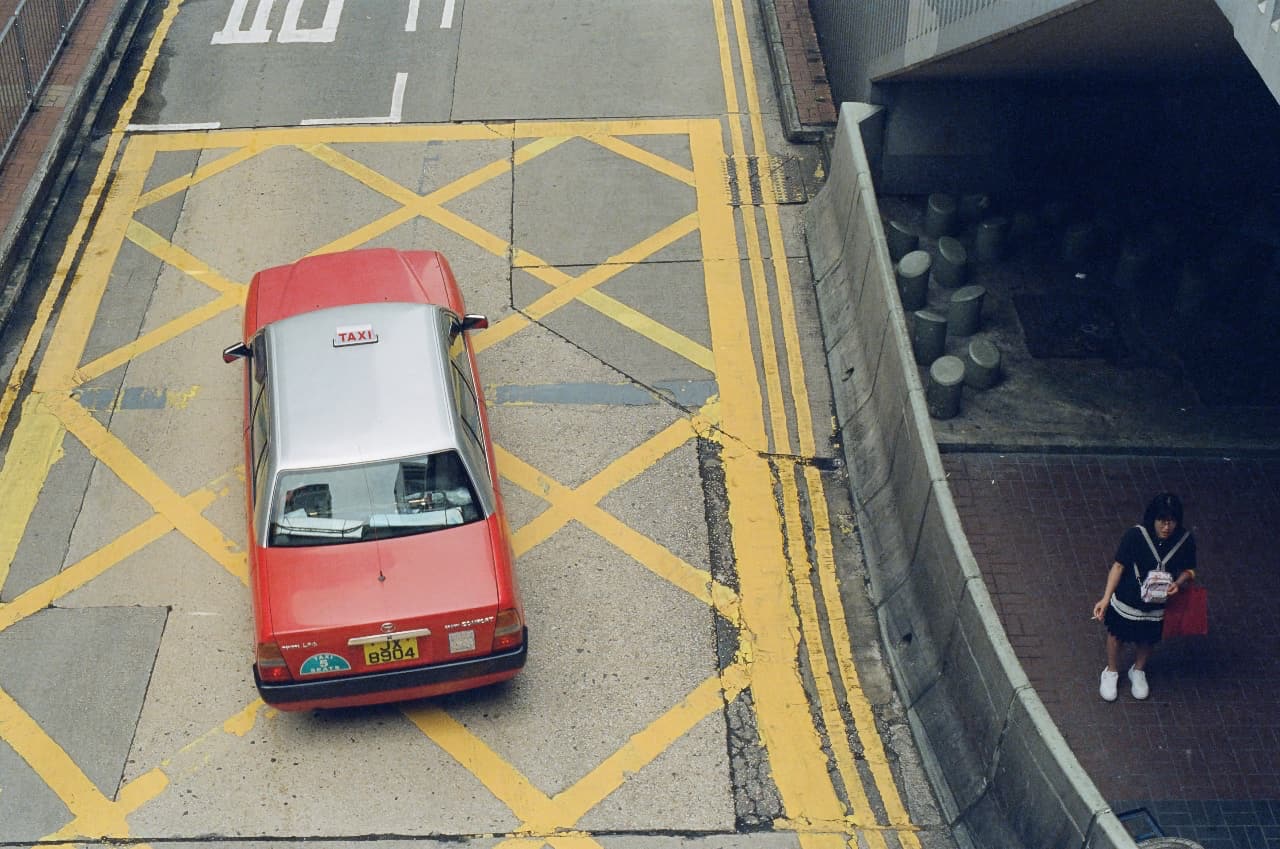
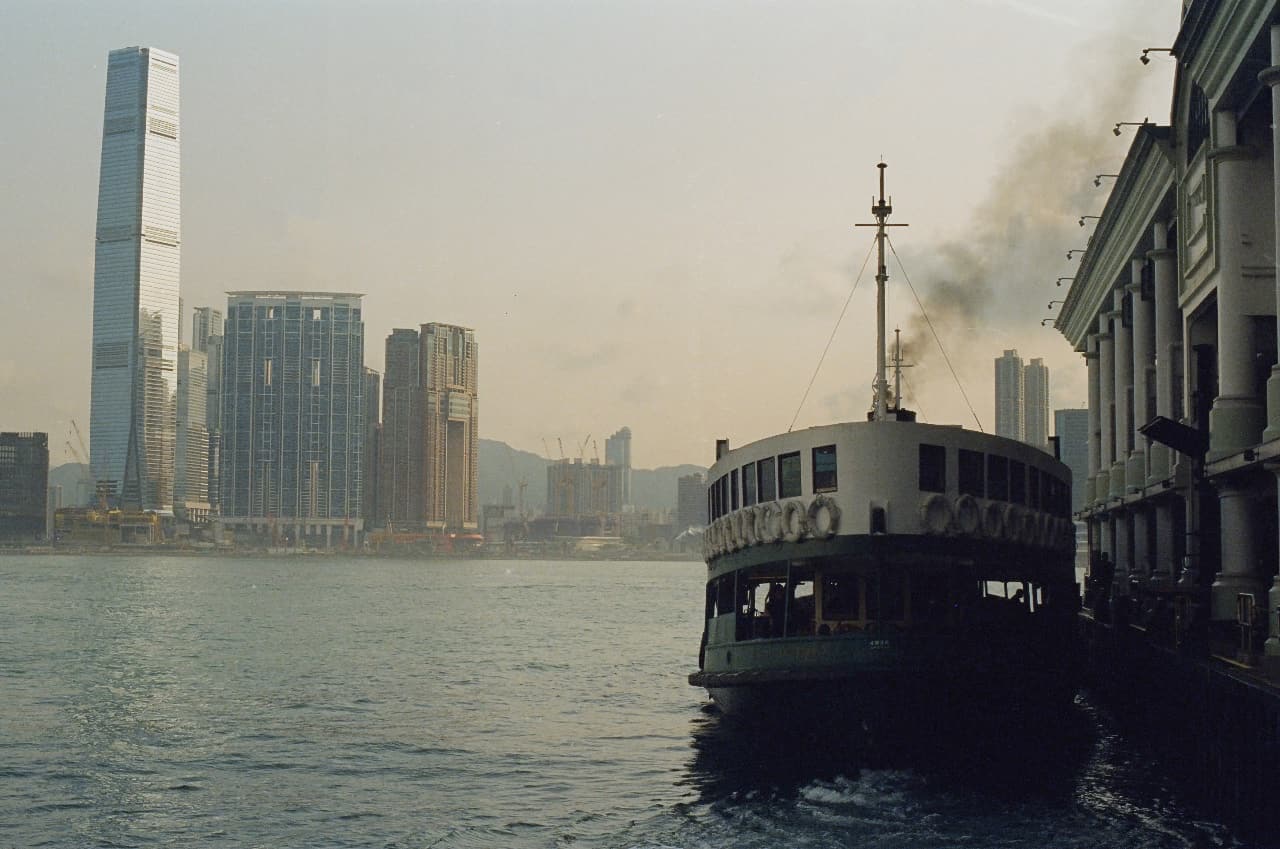
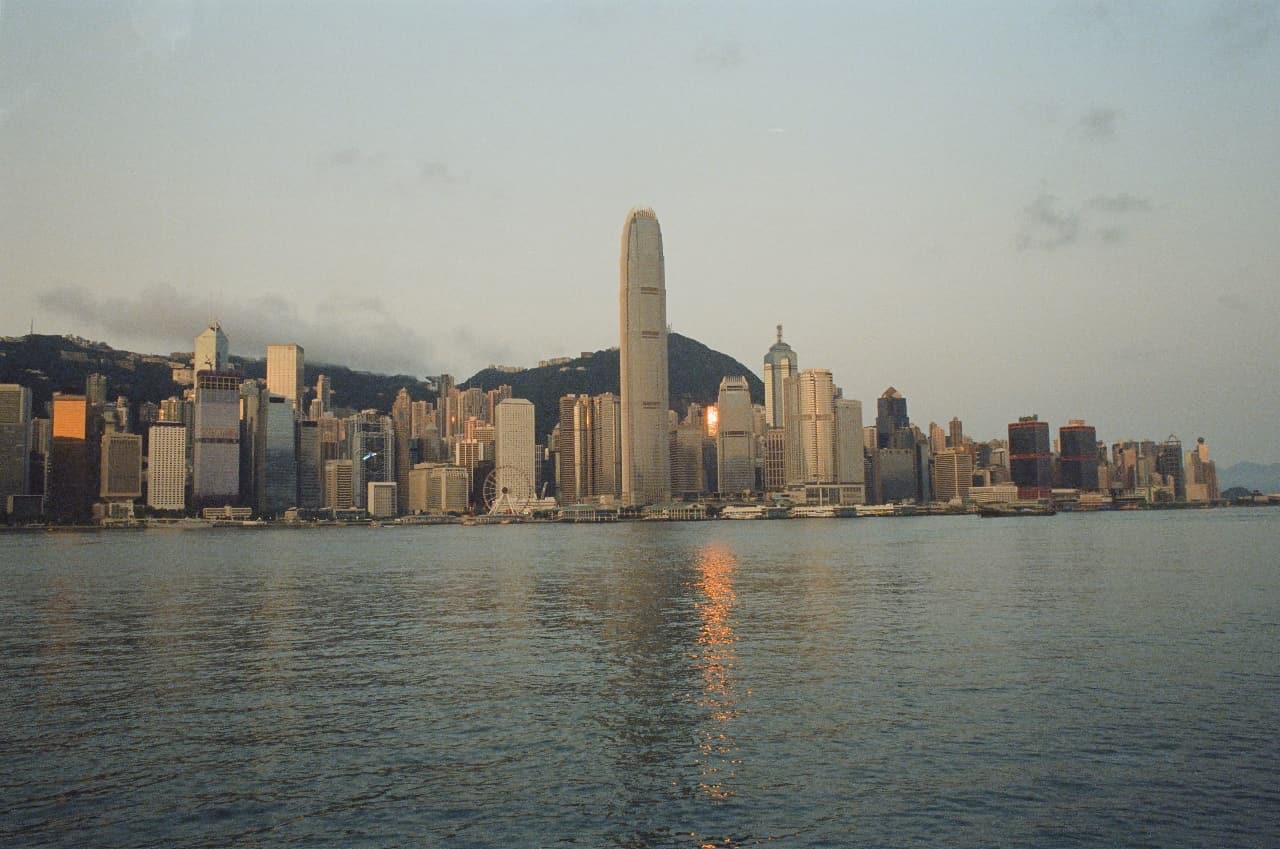
Cinematic?
That’s the word I was associating with and hoping for when I decided to give Kodak Vision3 a go. Because it’s used to shoot motion picture film, I figured that at least some of my images should come out with a certain cinematic quality and feel to them. I think the film really comes alive at night, under the lights of a big city. Of course, it certainly helps being in a visually stunning location like Hong Kong!
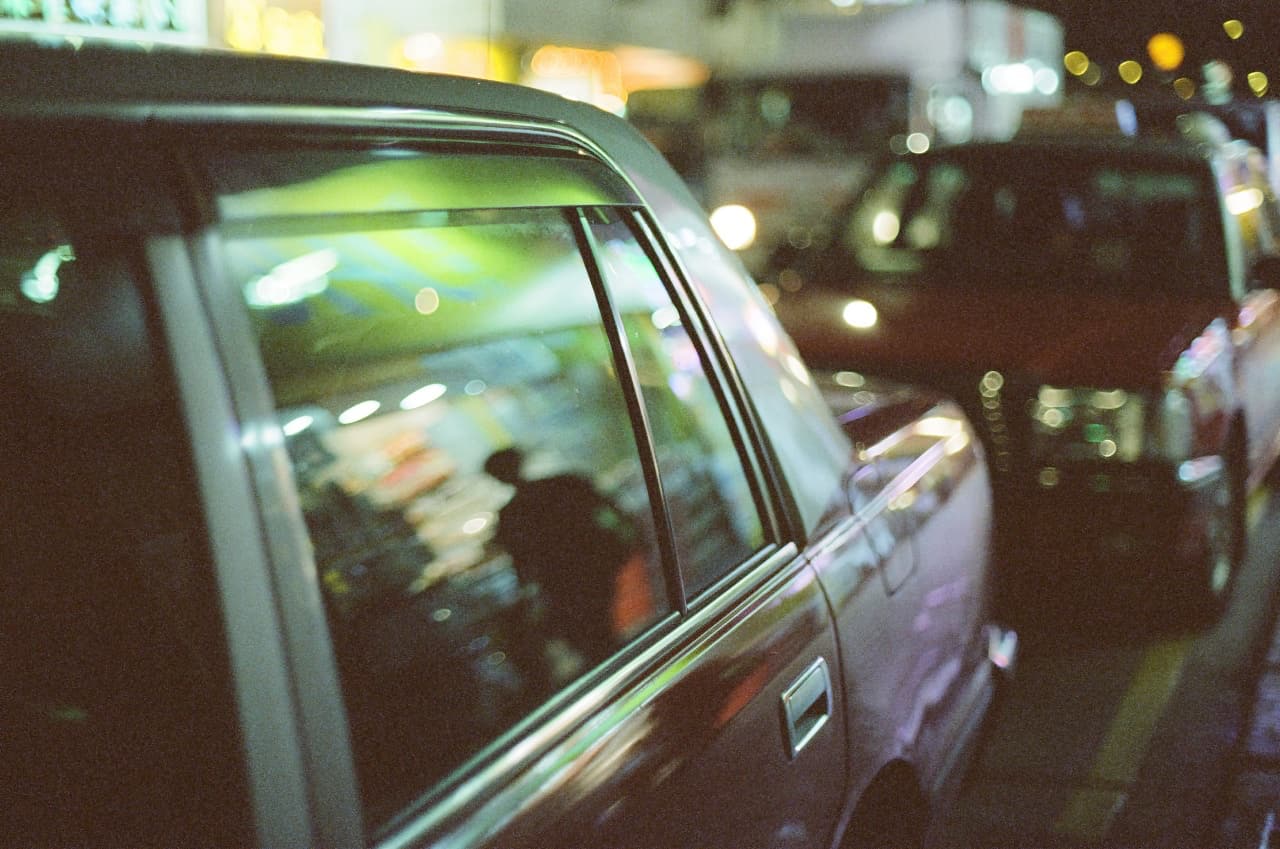
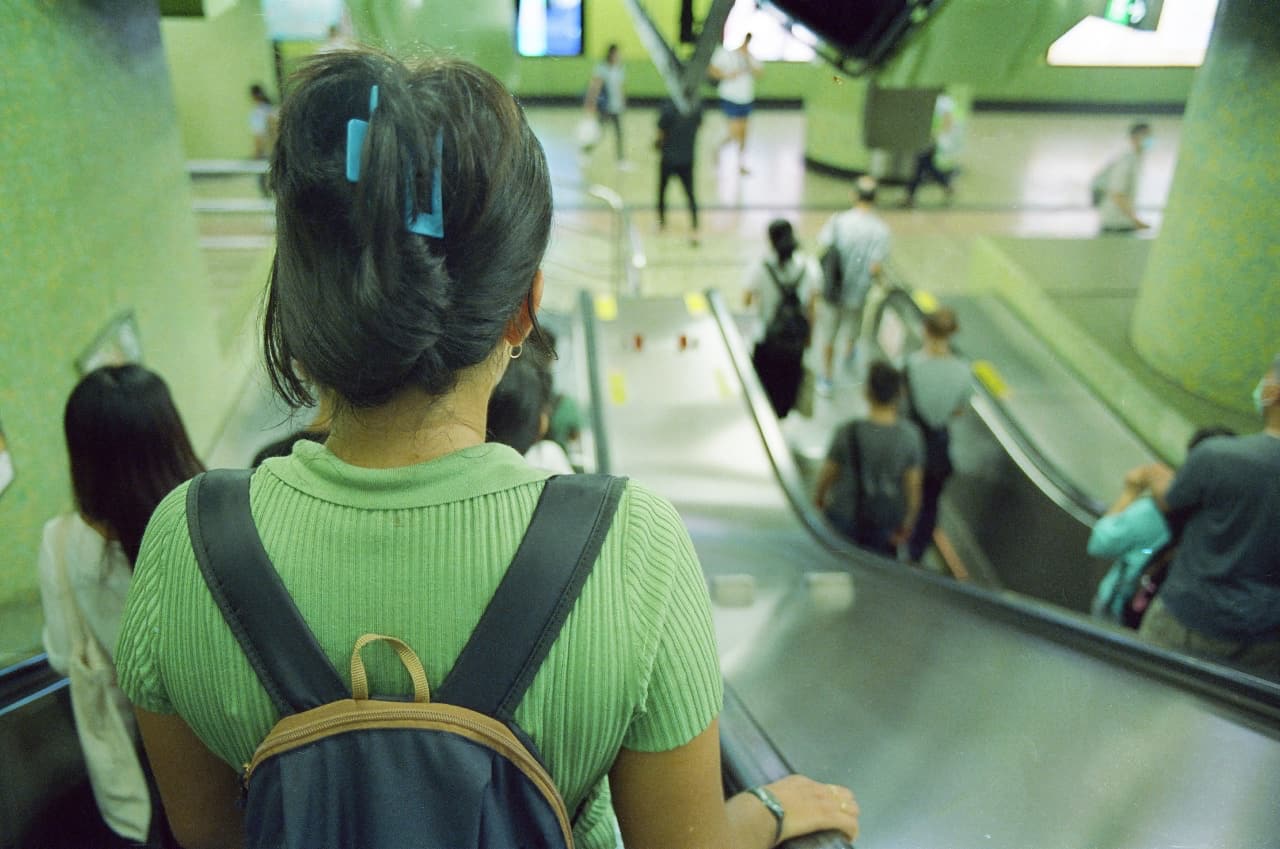
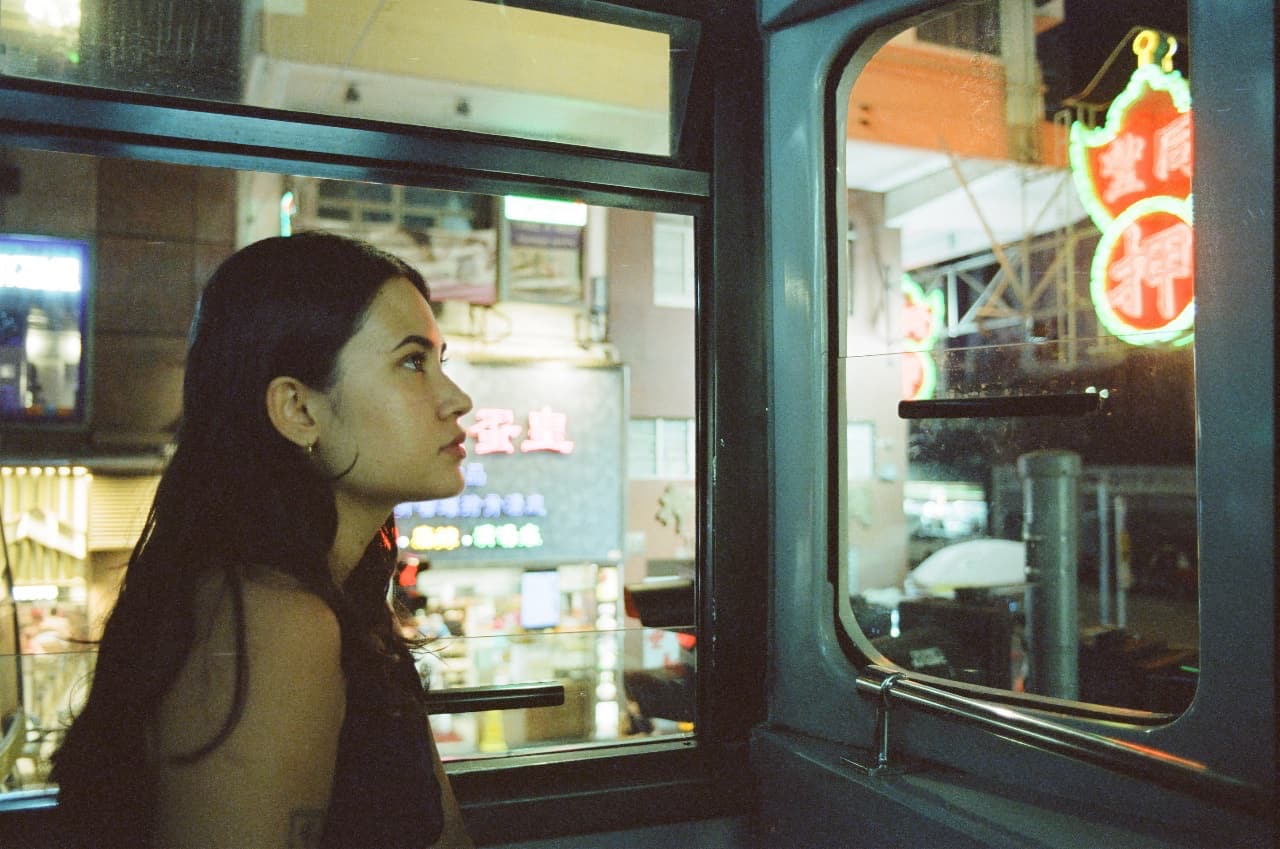
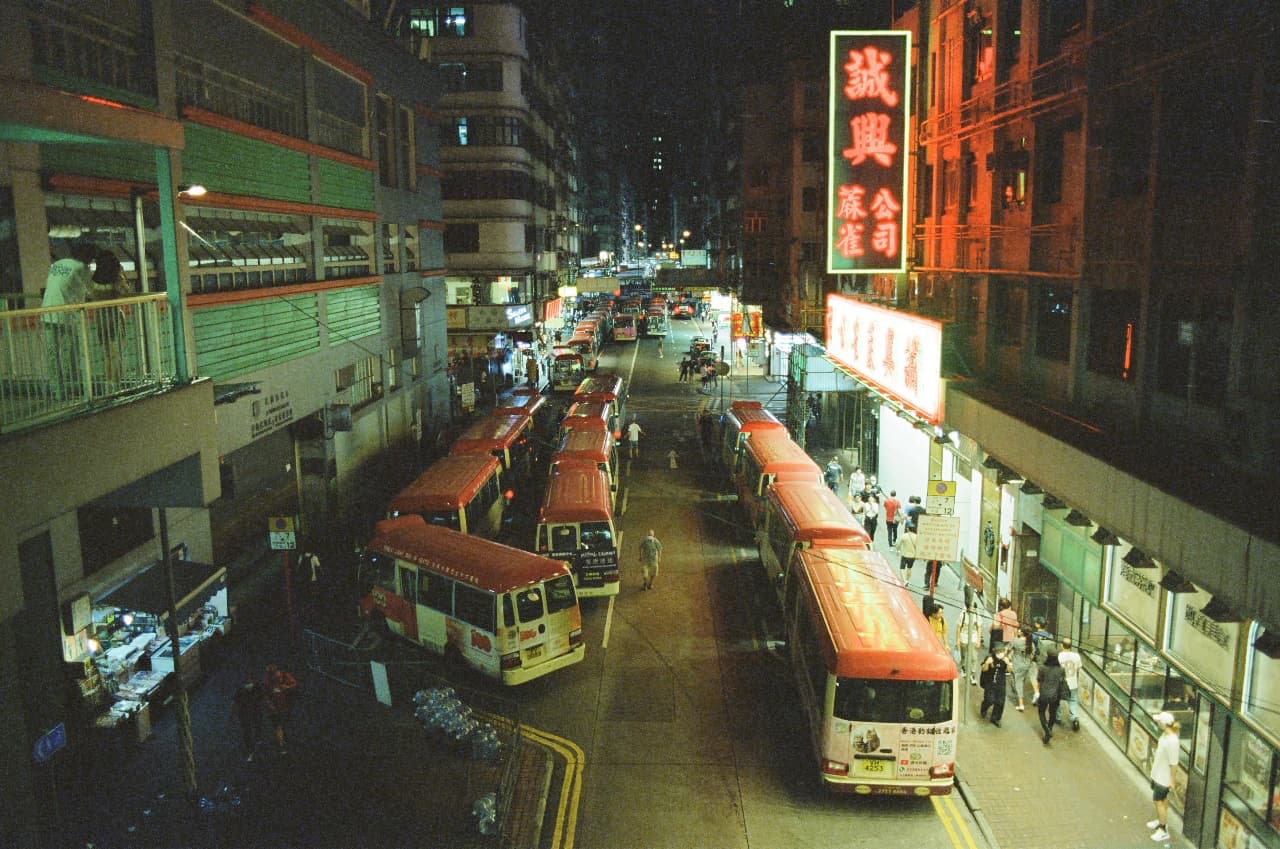
Tungsten balance
One of the main things to remember about a film stock like Kodak Vision3 500T is that all-important “T”. This is a tungsten balanced film, so if you shoot in the daylight with it, it’s going to give you a very cool, blue effect. Here’s a photo of the Hong Kong skyline showcasing what I mean:
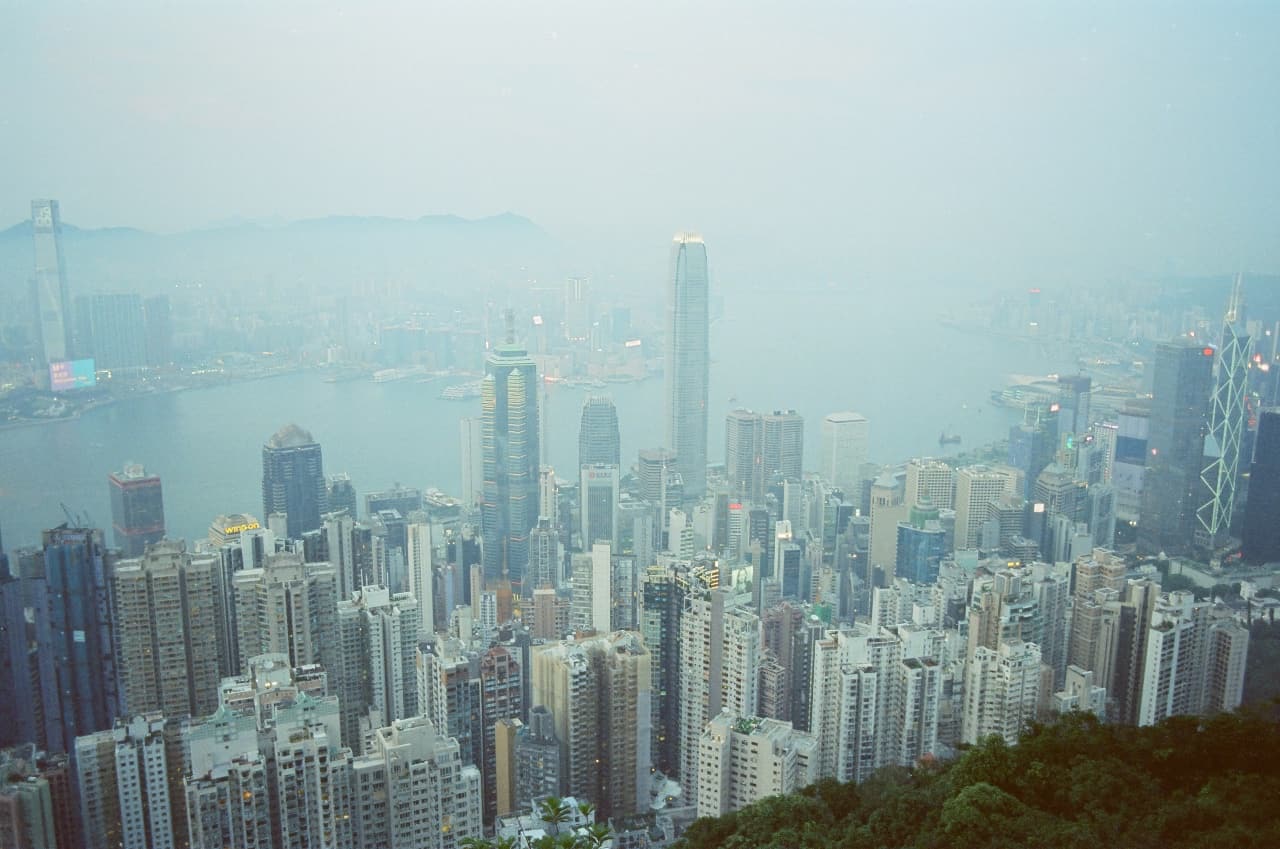
Now, you could certainly make this a purposeful, stylistic choice to shoot this way (many do), but if like me you’re looking for more balanced, natural colours, you can go ahead and purchase an 85b filter for your lenses. I found this worked really well and the vast majority of my daytime images are shot with the filter on. Here’s the same skyline scene, but shot with the 85b filter.
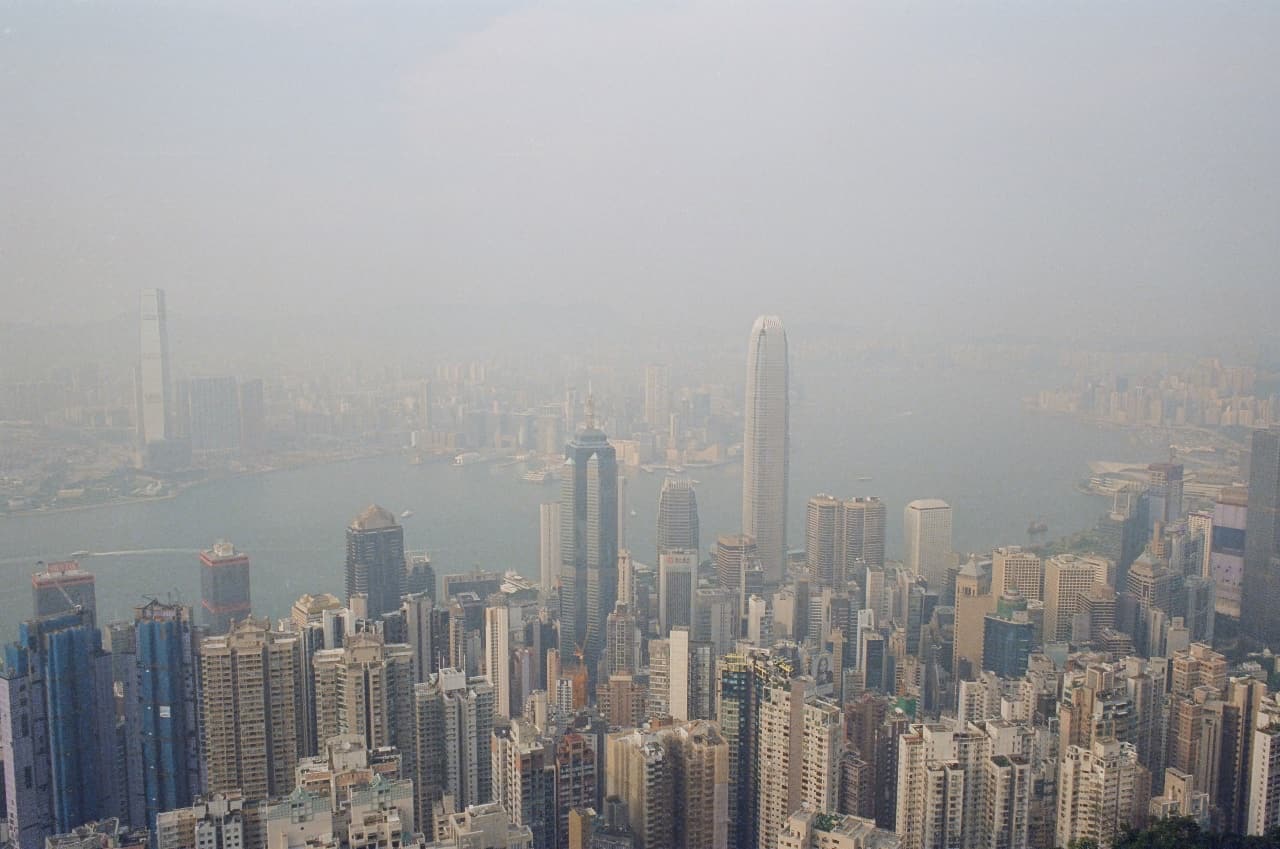
Grain check
When shooting film, there’s always going to be some grain. To what degree depends on a multitude of factors including film stock (and how old it is), lighting and processing. I’d say that Kodak Vision3 500T is fairly grainy – more so than I was expecting and especially in underexposed shadows. At night, that grain is part and parcel of the image, adding to the atmosphere.
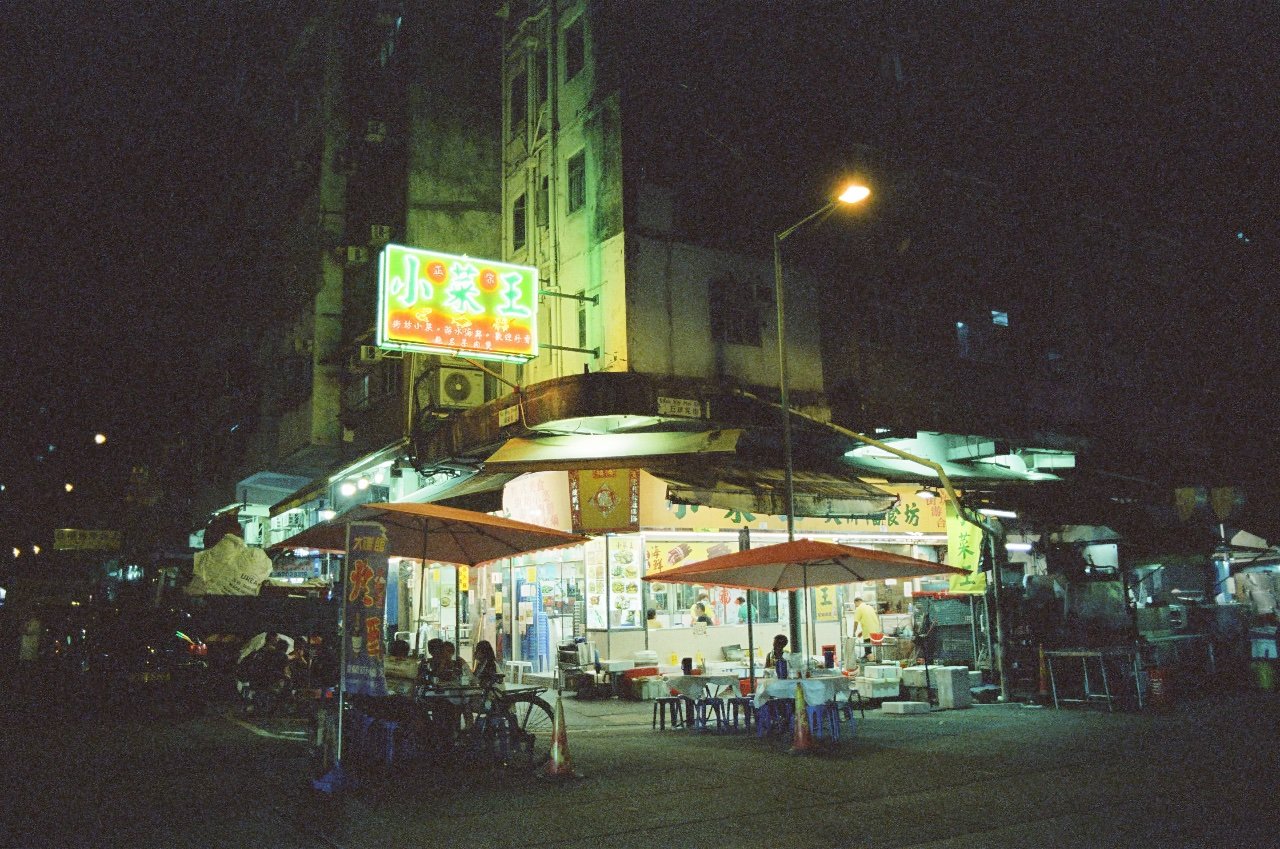
During the day, if I exposed correctly and used the light, things weren’t that bad. Faster stocks like 500T do tend to go off very quickly, often within a few months and especially when not stored properly. Best to buy relatively fresh, keep it in the fridge and shoot quickly!
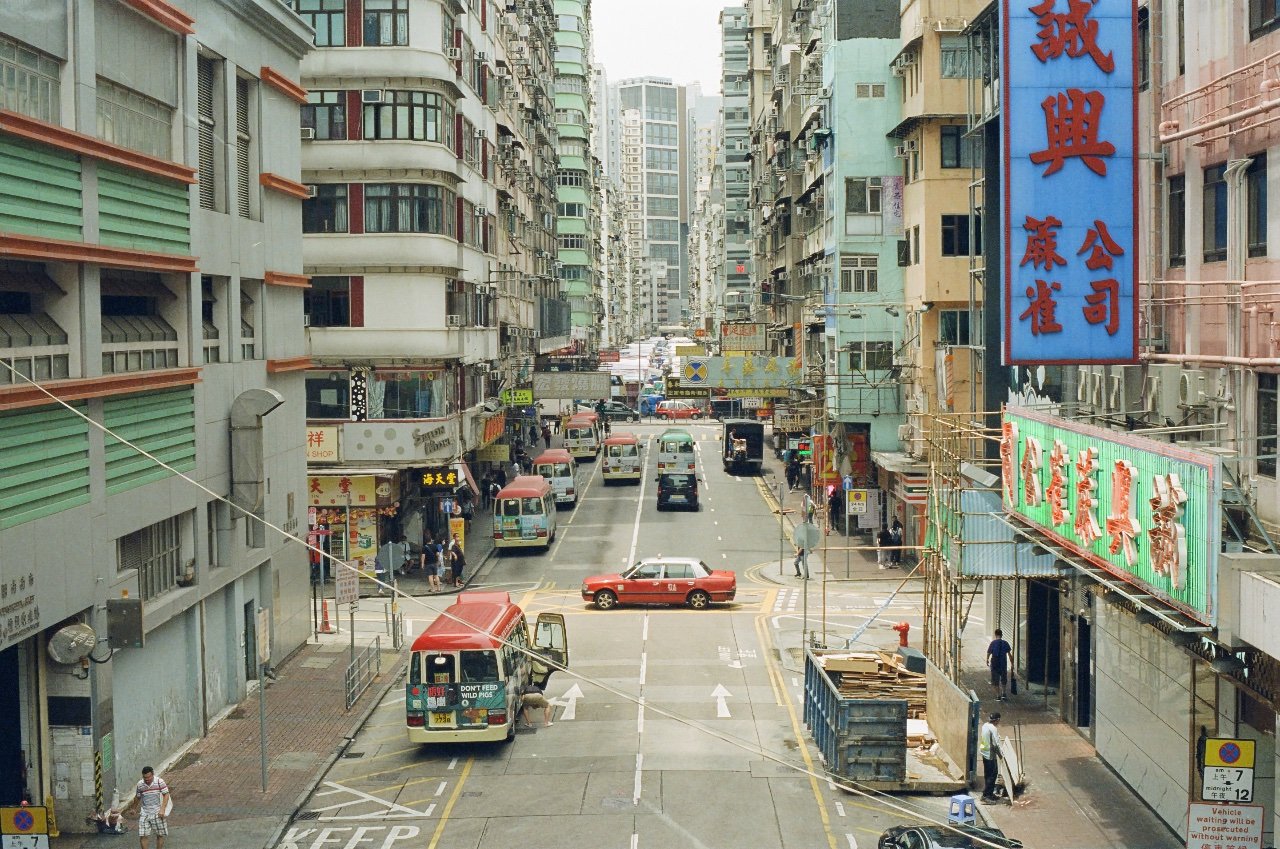
ECN-2 processing
It’s important to remember that Kodak Vision3 can’t be processed using a standard film processor. If you were shooting consumer film (something like Kodak Gold 200) you could use the standard C41 process and have your photos developed within a matter of hours. With Kodak Vision3, that’s not the case.
The film stock is unique because of the “rem-jet” coating (rem-jet means “remove by water jet”) – a black layer of carbon behind the base of the film. There’s a few reasons for this rem-jet layer.
When shooting films, the film moves at 24fps which is a speedy 45cm a second. With different elements in the cameras causing friction, static electricity could build up and be released into the emulsion, or scratch marks may appear on the film. The black rem-jet layer protects the base layer from these risks, as well as preventing any light refracting and bouncing back against the base layer. The film stock Cinestill 800T is famous for having this rem-jet layer removed beforehand, giving highlights a very stylistic “halo” effect.
The rem-jet has to be removed manually and thus requires a different type of developing process – one that takes longer than C41. This can be done at home if you’re brave enough but thankfully, more and more labs are starting to offer the ECN-2 process to customers.
Will I shoot it again?
I got carried away and ran out of film before my last day here. I wasn’t too sure how readily available this film stock would be, but to my surprise I was able to pick up another roll at a local film store in Kowloon – for just £6.50! Kodak Vision3 stock is definitely gaining in popularity and if your local supplier is worth their salt, they should have it. It’s produced some really interesting results and I’ll definitely be back for more.
tl;dr
- The resurgence of film photography has led to a significant increase in demand, causing prices for popular 35mm film stocks like Kodak to rise between 10% to 25% due to higher production costs and logistics.
- The film manufacturing industry has not only faced increased raw material and environmental costs but also struggles with limited production facilities after many were repurposed when film was expected to decline.
- Hobbyist photographers are turning to Kodak Vision3, a motion picture film that offers a lower-cost alternative for color photography. It can be purchased as ready-to-shoot 35mm canisters, with prices around £7 to £8.
- Kodak Vision3 offers several variants tailored for different shooting conditions, including 250D for daylight and 500T for tungsten lighting, making it a versatile choice for photographers seeking quality within budget constraints.
Tags: Production Featured
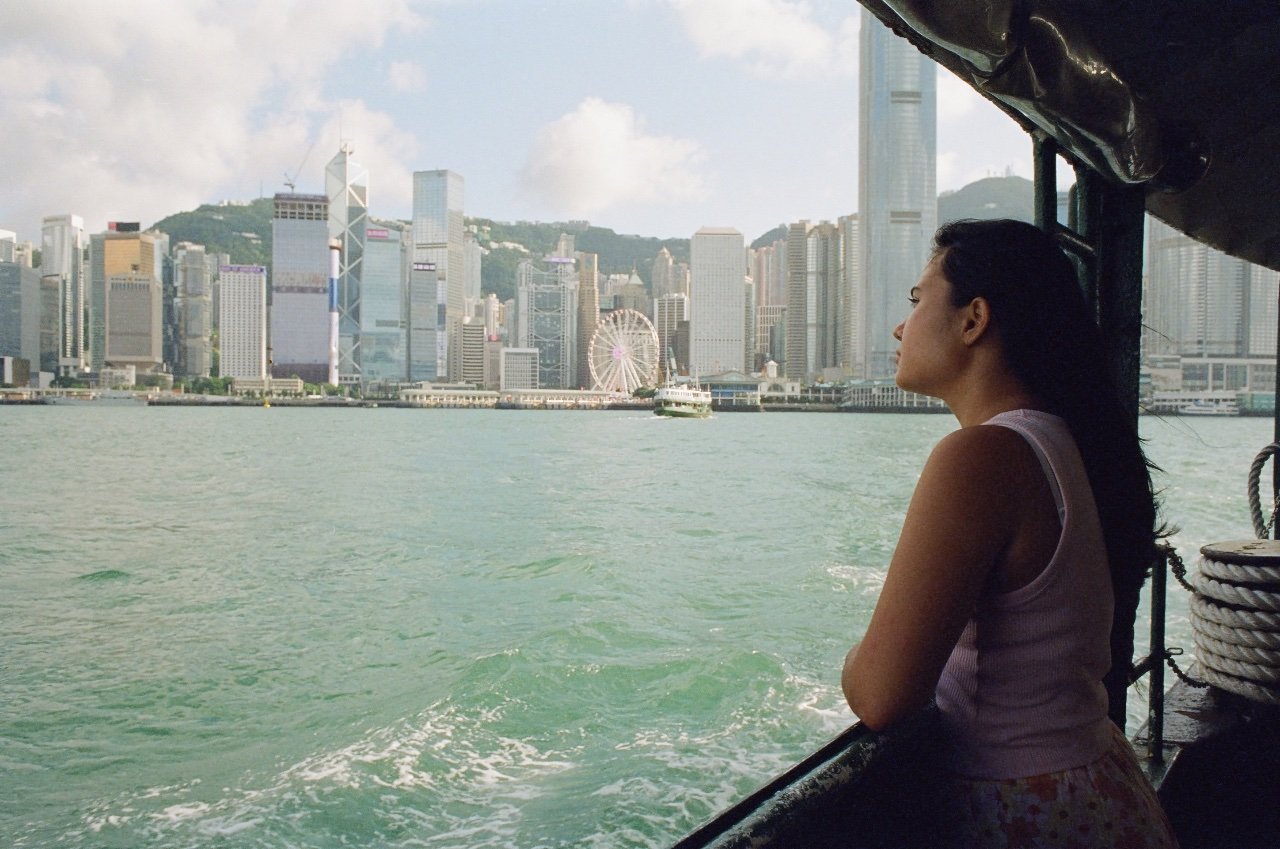

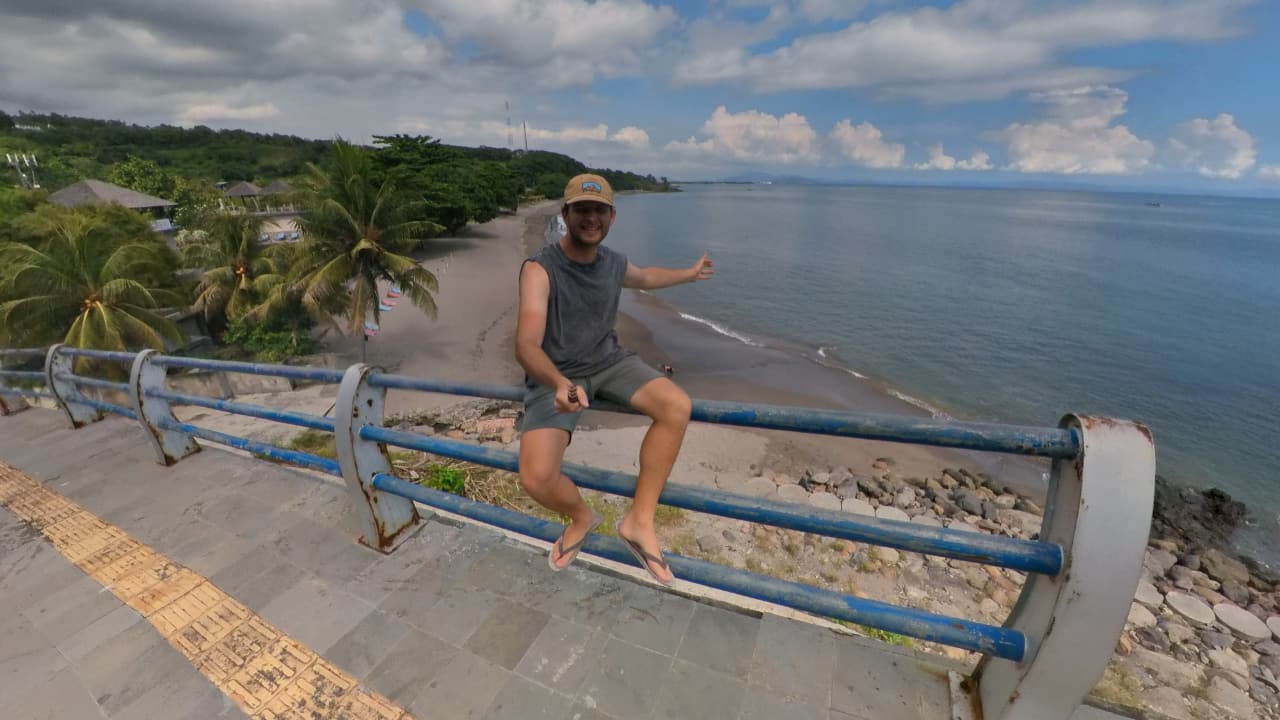
Comments